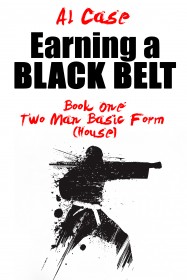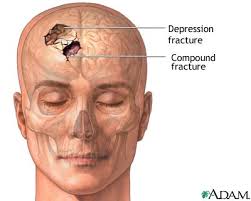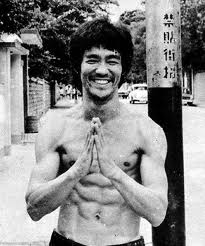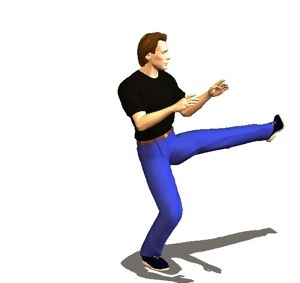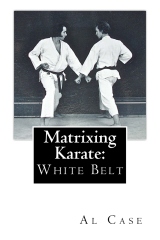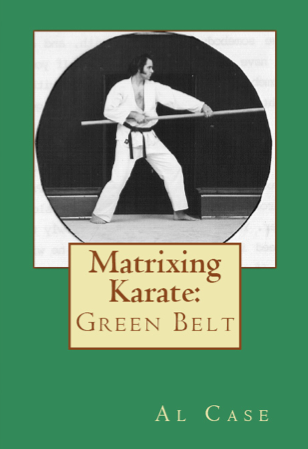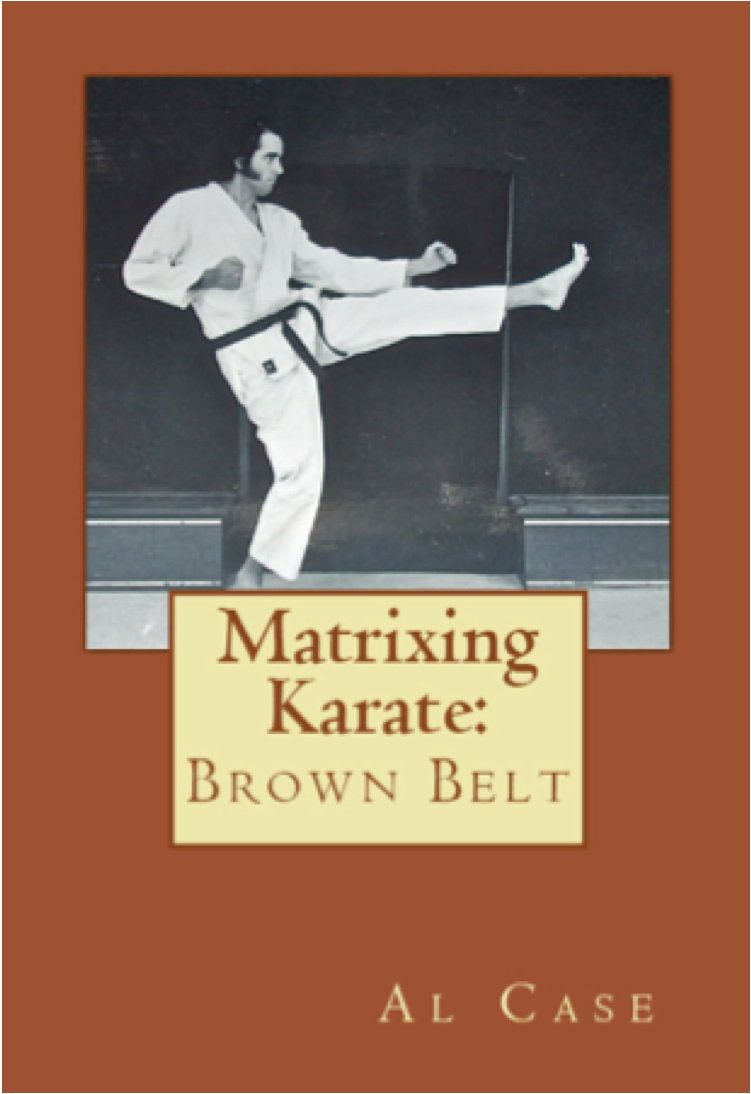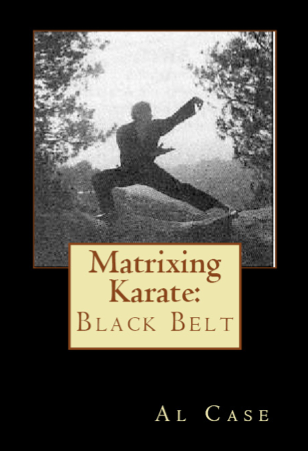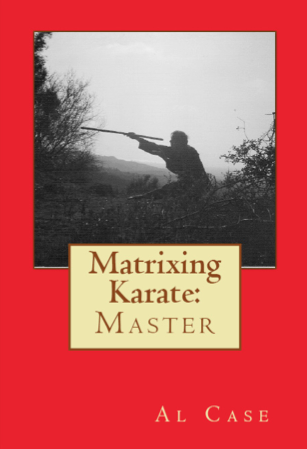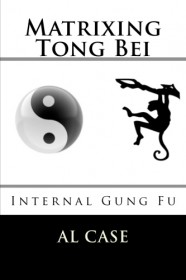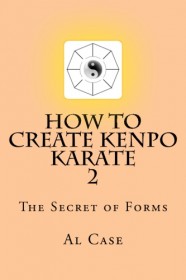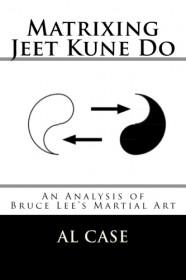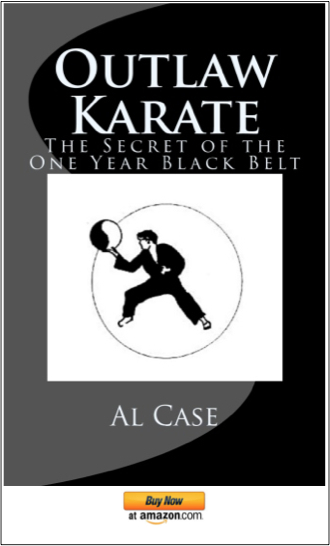Newsletter 811
How Karate was Mistranslated
Man!
Aren’t summer work outs the best?
You cleanse yourself
through the purity
of plain, old-fashioned sweat.
Glorious!
Okay,
let’s talk about how Karate was messed up.
I’ve talked about how Karate was
mangled by people with vested interests,
power hungry students,
nationalism, religion,
just about every thing under the sun.
So let’s talk about one specific way Karate,
and this is going to touch upon just every art there is,
was truly messed up.
When Karate was developed
people wore armor.
They carried swords.
And to use your fists,
to get your fists dirty
on the body of an enemy
was downright disgusting.
Think about it,
this is simple:
karate was developed to handle samurai,
with their swords and armor.
Karate was empty hand.
So,
do you crack armor with an empty hand?
Maybe,
but while you’re doing that,
the fellow is using his sword.
Do you block that sword with an arm?
Nope.
Do you get the point?
Now,
here is where it truly gets messed.
When the American servicemen were taught karate
they were taught a random variety of throws,
of defenses for weapons,
of specific techniques for specific attacks.
And not many of those attacks were real for this modern age!
So some instructor taught a student
how to disarm a sword.
But when you look at the technique,
there is no sword,
and the fellow the karateka is defending against
is punching the crud out of him.
Punches.
Here’s the funny thing,
Karate rose to the occasion.
All the arts rose to the occasion.
They managed to make fast punches and kicks,
and adapt to striking.
Even though striking was a small part of the whole art.
So Karate,
and other arts,
became skewed
to meet the demands of a punch crazy society.
okay,
summation:
Karate was designed for complete combat,
but then shrunken and warped
to fit the precise punches
of a different culture and time.
And that’s why Karate,
and many other arts,
just don’t work.
It’s like using metric wrenches on a 1950 Chevrolet.
So,
Karate,
and other martial arts,
are broken.
Mismatched.
Outgrown.
And here comes the funny part:
what was the solution provided in America
and in other parts of the world?
The solution was to teach boxing
and call it Karate.
Go on,
visit a few schools.
You will find people doing boxing,
or kick boxing,
or some other thing,
and calling it Karate.
I went to a school the other day,
the instructor had the children hold their hands
in boxing position.
They were taught to bob and weave.
It was not Karate.
There were no stances,
no blocks,
a few kicks,
including fancy ones that looked so cool,
but would get a person killed on the street.
But it said ‘Karate’ on the front window!
Big letters,
too.
And there are other solutions,
some pretty bizarre,
some effective,
but all deviating from what karate really is.
And,
deviating from kung fu,
or other types of arts.
What was my solution?
My solution was demanded
by the fact that I could not box
and call it Karate.
I couldn’t leave behind the energy,
the subtle throws,
the powerful way of developing the mind and body,
not to mention the spirit.
So what I did was rearrange everything,
made it 1, 2, 3 logical,
so that one step led to the next.
So that one didn’t learn a punch,
then a fancy hold,
and let’s throw in a cartwheel kick here,
cause people would really dig it!
I arranged the blocks
so they made as much sense as 1, 2, 3…
and everything is adapted for striking.
But I didn’t throw out the locks and throws.
Instead,
I teach the strikes,
classical strikes using energy,
and you end up in a specific position,
and then I show how each position ends up
in a lock or throw,
if you just continue the motion…logically.
Everybody else is teaching the classical forms,
trying to adapt them to strikes,
when they were not meant to be adapted to strikes.
Strikes were only a small part.
When you do Matrix Karate you learn everything logically,
and that includes the throws which have been put
at the end of the strike.
Think:
in a fight distance closes.
The kicks and punches are done,
the bodies come together,
and that is where the throw should be,
when the distance collapses.
I don’t teach how to fight from six feet away
with a lock or throw.
I teach how to logically close the distance,
using the punches and kicks logically,
and then do whatever throw you are in position to do.
And this is an important point:
after a strike or block,
you will find yourself in a specific position,
and there are only a couple of locks or throws possible.
That is true for every position.
So you don’t search through your mental database,
ransack your memory,
looking for a throw,
or trying to figure out how to throw
from an awkward and not appropriate position.
Instead,
you move forward logically,
and the result is a flow.
Maybe you’ve read some wins people have sent me
from doing some of my forms.
People talk about there being a specific flow
to the forms and techniques.
This is the result of logic.
Anyway,
I could talk forever,
but it’s all written down,
all video’d,
in Matrix Karate.
And if you don’t see the throw,
you can find all the throws,
logically,
so they fit into specific positions of any art,
in Matrix Kung Fu (Monkey boxing.
So,
‘nuff said.
You guys have a great summer work out,
three months working hard
in the heat,
sweating your b***s off.
HAPPY WORK OUT!
Al
For logical Karate:
http://monstermartialarts.com/martial-arts/matrix-karate/
For logical throws:
http://monstermartialarts.com/martial-arts/matrix-kung-fu/
go to and subscribe to this newsletter:
https://alcase.wordpress.com
Remember,
Google doesn’t like newsletters,
so this is the best way to ensure you get them.
http://monstermartialarts.com/martial-arts/matrix-karate/
http://www.amazon.com/Matrixing-Tong-Bei-Internal-Gung/dp/1507869290/ref=sr_1_1?ie=UTF8&qid=1423678613&sr=8-1&keywords=tong+bei


